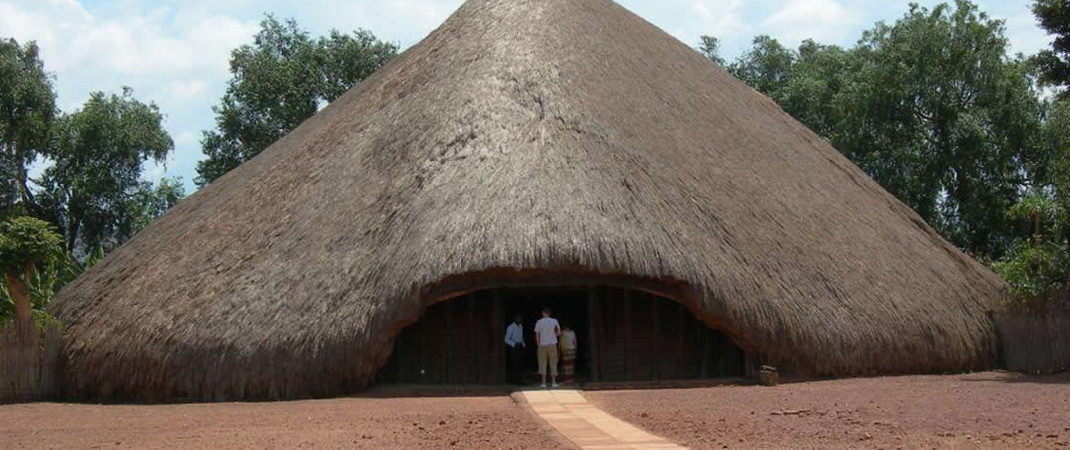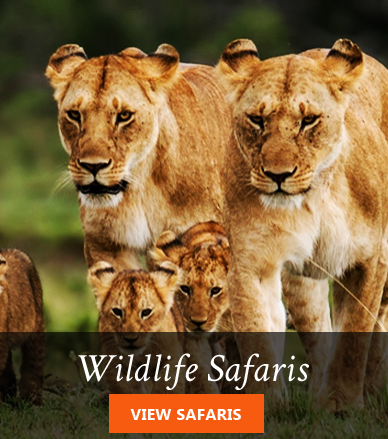Uganda, so often described as the Pearl of Africa, source of the River Nile has within its borders the second largest fresh water lake in the world, Lake Victoria; in the north the magnificent Murchison Falls; in the west the Impenetrable Bwindi Forest and the superb Ruwenzori ranges. Uganda, together with Rwanda, are the gorilla safari destinations of Africa.
The beauty of Uganda has always been in its natural attractions and scenery and the travel itineraries and safari programs we suggest include the best of these with chances also of seeing the vast herds of Uganda kob which still proliferate as well as many other small species of game such as the giant forest hog, Rothschild Giraffe, and Chimpanzee.
The Mountain Gorillas of Uganda
Table of Contents
In terms of wildlife, Uganda’s main attraction is the endangered Mountain Gorillas. The mountain Gorillas are peacefully giants, the biggest of the primates and sharing 95% of their genes with human beings. World-wide, there are less than 700 of these gentle giants – split between Virunga Mountains in Rwanda/ DRC and Bwindi Forest in Uganda.
Bwindi Impenetrable Forest
Bwindi is located in southwestern Uganda on the edge of the western rift valley covering 331 sq. kms. It is one of the largest natural forests in East Africa, supporting a large number of plants and animals not found elsewhere. About half the world’s population of 600 mountain gorillas reside in Bwindi.
The vegetation, as the park’s name implies, is composed of tropical rainforest with dense undergrowth. This rugged terrain makes hiking in search of gorilla strenuous work. Visitors who trek should be prepared for up to 8 hours of hiking. Good physical condition is required. A maximum of only 6 permits per day are available for advance booking, so confirmation 4-12 months in advance is required to avoid disappointment.
Along with the gorillas, there are nine other species of primates including chimpanzee, blue monkey, redtail monkey, L’hoest’s monkey, black and white colobus, potto, Demidoff’s and needle-clawed galago. Three hundred forty-seven species of birds have been recorded in Bwindi; seven species are listed as endangered. Species of particular interest include the Kivu ground thrush, white-bellied robin chat, red-throated alethe, collared apallis, short-tailed warbler, yellow-eyed black flycatcher, Rwenzori batis, blue-headed sunbird, strange weaver and the Shelley’s crimsonwing. Over 200 species of butterflies have also been recorded here.
Queen Elizabeth National Park
As one of the outstanding treasures of Uganda, Queen Elizabeth National Park has recently been designated a Biosphere Reserve for Humanity under UNESCO. It is the most popular and easily accessible game reserve in Uganda. The park is located in the southwest of Uganda, near Kasese. From open savannah to rainforest, from dense papyrus swamps and brooding crater lakes to the vastness of Lake Edward, it is little wonder that QENP boasts one of the highest biodiversity ratings of any game reserve in the world.
Almost 100 mammal species and a remarkable 606 bird species makes this superb safari territory, with elephant, a profusion of hippos, the elusive giant forest hog all regularly sighted around the tourist village on the Mweya Peninsula – which also boasts a marvelous waterfront setting in the shadow of the Rwenzori Mountains. It is the home of the famous tree-climbing lions in Ishasha, the Uganda Kob and other antelope species, as well as elephant, buffalo, hippos, baboons and chimpanzee.
A total of 547 confirmed and 15 unconfirmed bird species have been recorded in Queen Elizabeth. This is one of the highest totals in the world and is truly remarkable for such a relatively small reserve. Species recorded include the Shoebill stork, black bee-eater, 11 types of kingfishers and a variety of raptors, including several falcons and eagles.
In the crater lakes, spectacular flocks of flamingos gather, creating the image of a moving pink carpet. The launch trip along the Kazinga Channel between Lakes George and Edward is a memorable way to view the abundant game in Queen Elizabeth and to see an astounding number of bird species.
The Chimpanzee Sanctuary at Ngamba
Uganda is also home to Ngamba Island Chimpanzee Sanctuary. It is located 23 kms south east of Entebbe in the central park of Uganda. Ngamba island forms part of the Kome archipelago, a group of about 15 islands and islets separated from the northern shore of Lake Victoria by the 10km wide Damba channel.
The Chimpanzee Sanctuary was established in 1998, when 19 orphaned chimpanzees rescued from poaching were relocated from the Uganda Wildlife Education centre and the smaller Isinga Island in Queen Elizabeth National Park. The sanctuary exists to provide the best facilities and care to captive chimpanzees. For Gorilla and Chimpazee Tours in Uganda click here
Ngamba was chosen as a sanctuary because it was formerly uninhabited and its rain forest environment is almost identical to that of wild chimpanzees, with more than 50 plant species known to be utilized by free-ranging chimps in Uganda represented. The sanctuary is supported by Uganda Wildlife Education Center, Born Free Foundation, Jane Goodall Institute, among others.




Leave a Reply